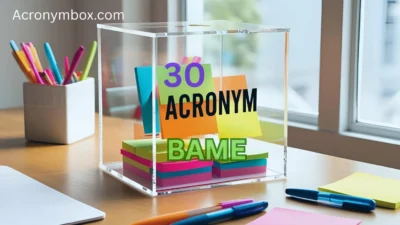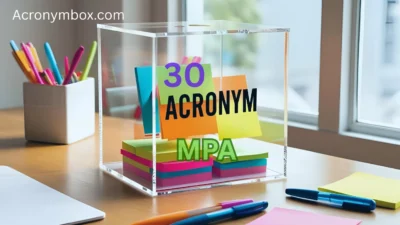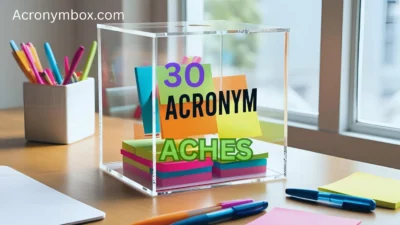If you’ve ever tried to memorize a list or understand a complex term quickly, you’ve probably come across either an acronym or a mnemonic. But what exactly is the difference between the two—and when should you use one over the other?
While they both serve as memory aids, they work in slightly different ways and serve different purposes.
Let’s break it down and then walk through 30 examples—15 acronyms and 15 mnemonics—each with explanations and usage tips to help you choose the best one for your needs.
🧠 What’s the Difference Between an Acronym and a Mnemonic?
👉 Acronym
An acronym is a word or abbreviation formed from the initial letters of a series of words.
Example: NASA = National Aeronautics and Space Administration
Purpose: Simplifies long names or phrases into something easy to remember or say.
👉 Mnemonic
A mnemonic is a memory device—usually a phrase or pattern of letters, sounds, or ideas—designed to help you recall information.
Example: “Every Good Boy Deserves Fruit” to remember the notes on the lines of the treble clef (E, G, B, D, F).
Purpose: Helps with memorizing a list, order, or rule using vivid associations or phrases.
🔁 15 Common Acronyms and How to Use Them
1. NASA – National Aeronautics and Space Administration
Use: In discussions about space, technology, or government agencies.
2. SCUBA – Self-Contained Underwater Breathing Apparatus
Use: Great for diving or marine biology contexts.
3. RADAR – Radio Detection and Ranging
Use: Often used both literally and metaphorically (e.g., “off the radar”).
4. FOMO – Fear Of Missing Out
Use: Pop culture, social media, or psychology.
5. GIF – Graphics Interchange Format
Use: Tech, digital media.
6. ASAP – As Soon As Possible
Use: Workplace communication, urgency.
7. DIY – Do It Yourself
Use: Home projects, crafts, or tutorials.
8. ETA – Estimated Time of Arrival
Use: Travel, logistics, customer service.
9. PIN – Personal Identification Number
Use: Security, banking.
10. RAM – Random Access Memory
Use: Computing and hardware discussions.
11. LASER – Light Amplification by Stimulated Emission of Radiation
Use: Science and tech, also common in pop culture.
12. YOLO – You Only Live Once
Use: Informal, spontaneous actions or social media.
13. VPN – Virtual Private Network
Use: Online privacy, cybersecurity.
14. HTML – HyperText Markup Language
Use: Web development and tech education.
15. CEO – Chief Executive Officer
Use: Business and organizational contexts.
🎯 When to Use Acronyms
- Speed and efficiency: Acronyms save time in writing and speech.
- Technical fields: Ideal in industries like medicine, science, and technology.
- Cultural shorthand: Words like FOMO and YOLO capture trends or feelings concisely.
- Professional communication: Acronyms like CEO or ASAP are workplace staples.
Tip: Make sure your audience understands the acronym. Avoid overusing them in formal writing unless they are widely known.
🔁 15 Mnemonics That Actually Work
1. PEMDAS – Please Excuse My Dear Aunt Sally
Use: Math order of operations (Parentheses, Exponents, Multiplication, Division, Addition, Subtraction)
2. ROYGBIV – Colors of the rainbow
Use: Red, Orange, Yellow, Green, Blue, Indigo, Violet
3. HOMES – The Great Lakes
Use: Huron, Ontario, Michigan, Erie, Superior
4. FACE – Notes in the spaces of the treble clef
Use: F, A, C, E
5. My Very Educated Mother Just Served Us Nachos
Use: Planets – Mercury, Venus, Earth, Mars, Jupiter, Saturn, Uranus, Neptune
6. Every Good Boy Deserves Fruit
Use: Treble clef lines – E, G, B, D, F
7. I Before E, Except After C
Use: Common English spelling rule
8. Never Eat Soggy Waffles
Use: Compass directions – North, East, South, West
9. King Philip Came Over For Good Soup
Use: Taxonomy – Kingdom, Phylum, Class, Order, Family, Genus, Species
10. RAVEN – Remember Affect Verb, Effect Noun
Use: Grammar aid
11. DARE – Drugs Are Really Expensive
Use: Anti-drug education tool
12. FANBOYS – Coordinating Conjunctions
Use: For, And, Nor, But, Or, Yet, So
13. OIL RIG – Oxidation Is Loss, Reduction Is Gain
Use: Chemistry redox reactions
14. BECAUSE – Big Elephants Can Always Understand Small Elephants
Use: Helps kids spell “because”
15. ABC – Airway, Breathing, Circulation
🎯 When to Use Mnemonics
- Learning sequences or rules: Perfect for educational settings.
- Memory challenges: Great for recalling detailed info in the right order.
- Creative teaching: Especially helpful for children or new learners.
- Test prep: Handy for SAT, GRE, or exams where facts matter.
Tip: Mnemonics are often more useful for memorizing content, while acronyms help with identifying or referring to content.
📊 Acronym vs Mnemonic: Quick Comparison
| Feature | Acronym | Mnemonic |
| Structure | First letters form a word | Phrase, sentence, or letter pattern |
| Purpose | Shorten complex terms | Aid memory for facts, sequences, rules |
| Use Case | Tech, science, business | Education, memorization, learning aids |
| Examples | NASA, FOMO, VPN | PEMDAS, ROYGBIV, My Very Educated… |
| Tone | Often technical or casual | Usually educational and fun |
💡 How to Choose the Right One
Ask yourself:
- Am I naming something or referring to a concept? → Use an acronym.
- Am I trying to memorize something or help others do so? → Go with a mnemonic.
- Do I want to be playful or instructional? → Mnemonics often win in that case.
- Do I need to sound professional or efficient? → Acronyms may be more appropriate.
✍️ Conclusion
Whether you’re simplifying speech with acronyms or supercharging your memory with mnemonics, both tools have their place. They’re not interchangeable—but they’re both powerful in their own way.
Use acronyms when:
- You need shorthand for long or complex terms.
- You’re in a professional or technical environment.
Use mnemonics when:
- You or your audience need to remember detailed information.
- You’re teaching or learning something new.
Keep both in your mental toolbox—you never know when a clever memory trick or a snappy abbreviation will save the day.




